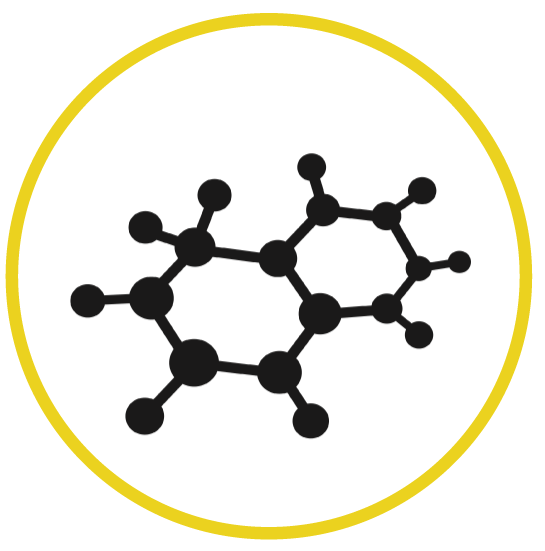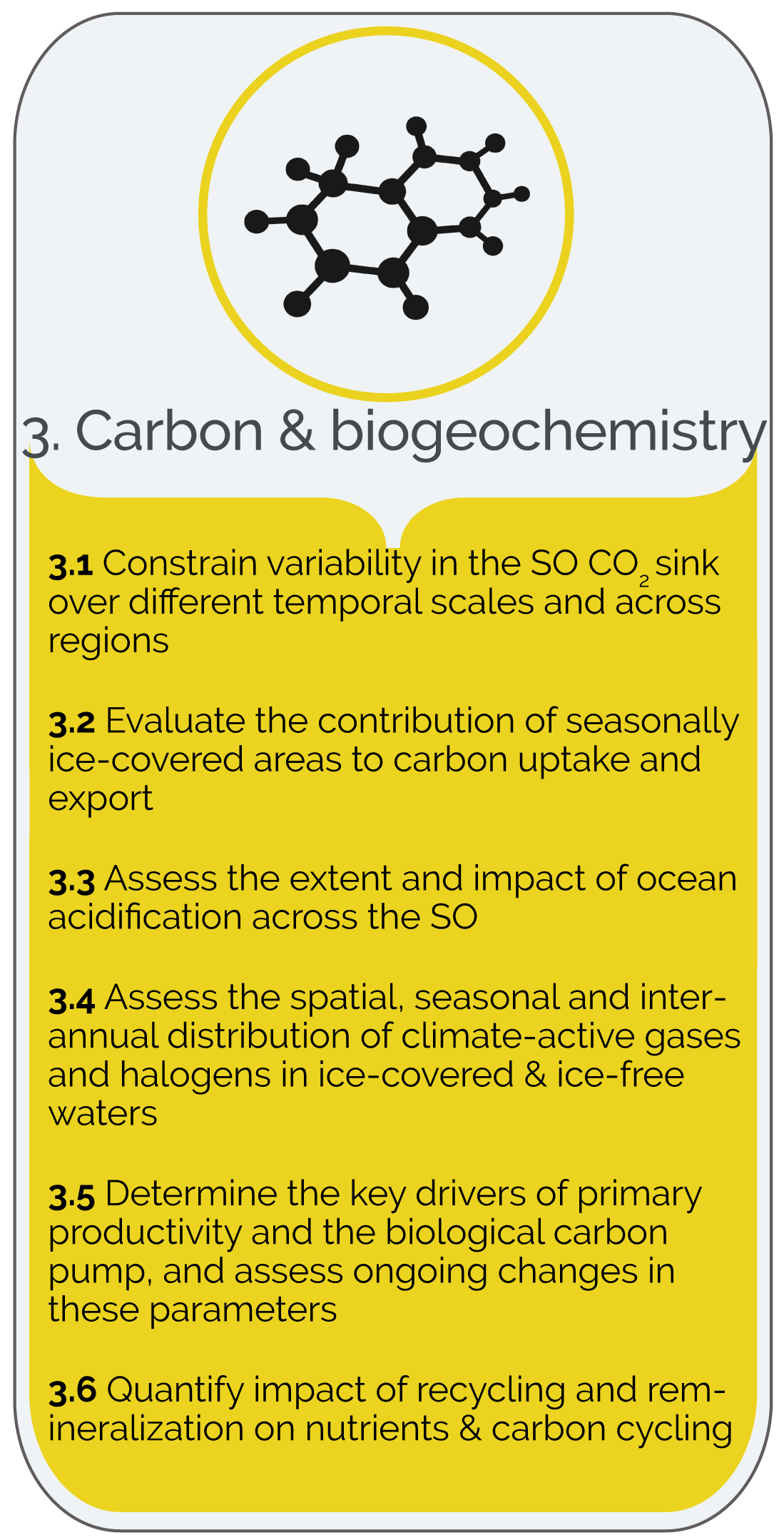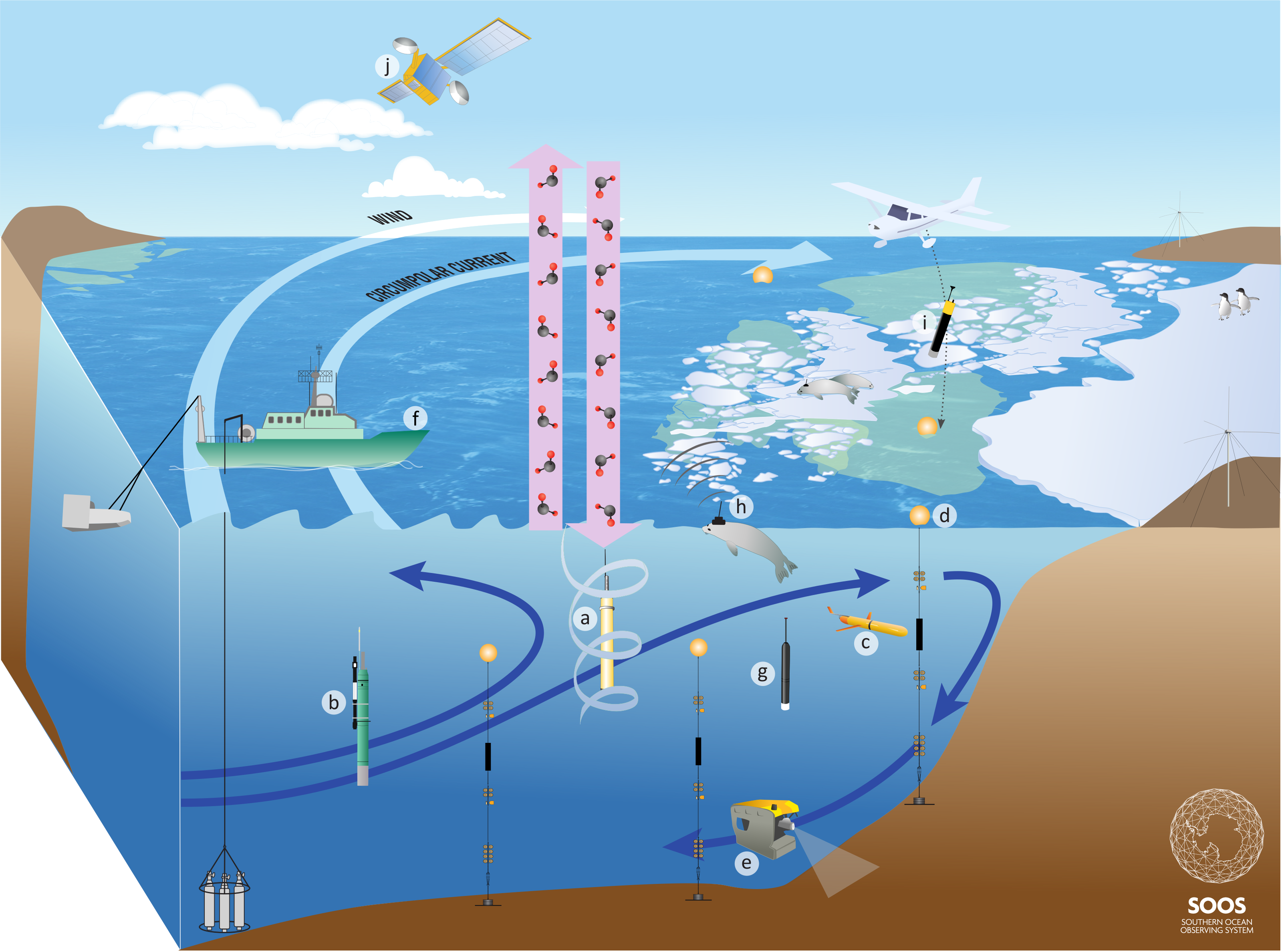
Science Theme 3: Carbon & Biogeochemistry

Understanding and quantifying the state and variability of Southern Ocean carbon and biogeochemical cycles
The Southern Ocean is the Earth’s largest oceanic sink for natural and anthropogenic CO2 and exerts a strong control on global climate and ocean fertility through solubility and biological carbon pump mechanisms. It additionally regulates the uptake and emission of other climate-active gases such as methane, nitrous oxide and dimethyl-sulphide (DMS). Despite the importance of the Southern Ocean in global biogeochemical cycles and climate, major uncertainties persist in our understanding of its biogeochemical cycles and the impact of these on the global cycles and climate. Uncertainities include the Southern Ocean carbon budget; the mode, magnitude and bio-availability of the iron supply; and how the biological carbon pump and microbial carbon pumps are likely to change.
Autonomous platforms have greatly enhanced the availability and quality of the carbon and biogeochemical data available for the Southern Ocean, including for the winter when observations are particularly scarce. However, the deployment and recovery of equipment in the Southern Ocean, particularly in the seasonal sea ice zone, is challenging, and only a few long-term observing platforms have been established in ice-covered areas. The development and improvement of new satellite sensors and in situ sensors are necessary to enhance the quantity and quality of Southern Ocean data. Ship-based programmes also remain essential, both for calibrating autonomous platforms and sensors, making measurements not currently feasible by satellite, and for monitoring the Southern Ocean response to climate change.
Key Science Challenges
3.1: Constrain variability in the Southern Ocean CO2 sink over different temporal scales and across regions
3.2: Evaluate the contribution of seasonally ice-covered areas to carbon uptake and export
3.3: Assess the extent and impact of ocean acidification across the Southern Ocean
3.4: Assess the spatial, seasonal and interannual distribution of climate-active gases and halogens in ice-covered and ice-free waters
3.5: Determine the key drivers of primary productivity and the Biological Carbon Pump (light, stratification, circulation, and supply of micro- and macronutrients) and assess ongoing changes in these parameters
3.6: Quantify the impact of recycling and remineralisation, including via the Microbial Carbon Pump, on nutrients and carbon cycling

Addressing Challenges
Delivery of the knowledge and scientific outputs that will address these challenges is carried out by SOOS alone, but by many community efforts, including the programs and projects of SCAR and SCOR, among others. SOOS will not duplicate the efforts of these programs, but will support them where appropriate, to enhance the collection and delivery of the required data. Click below for a list of key community efforts to address these challenges:







